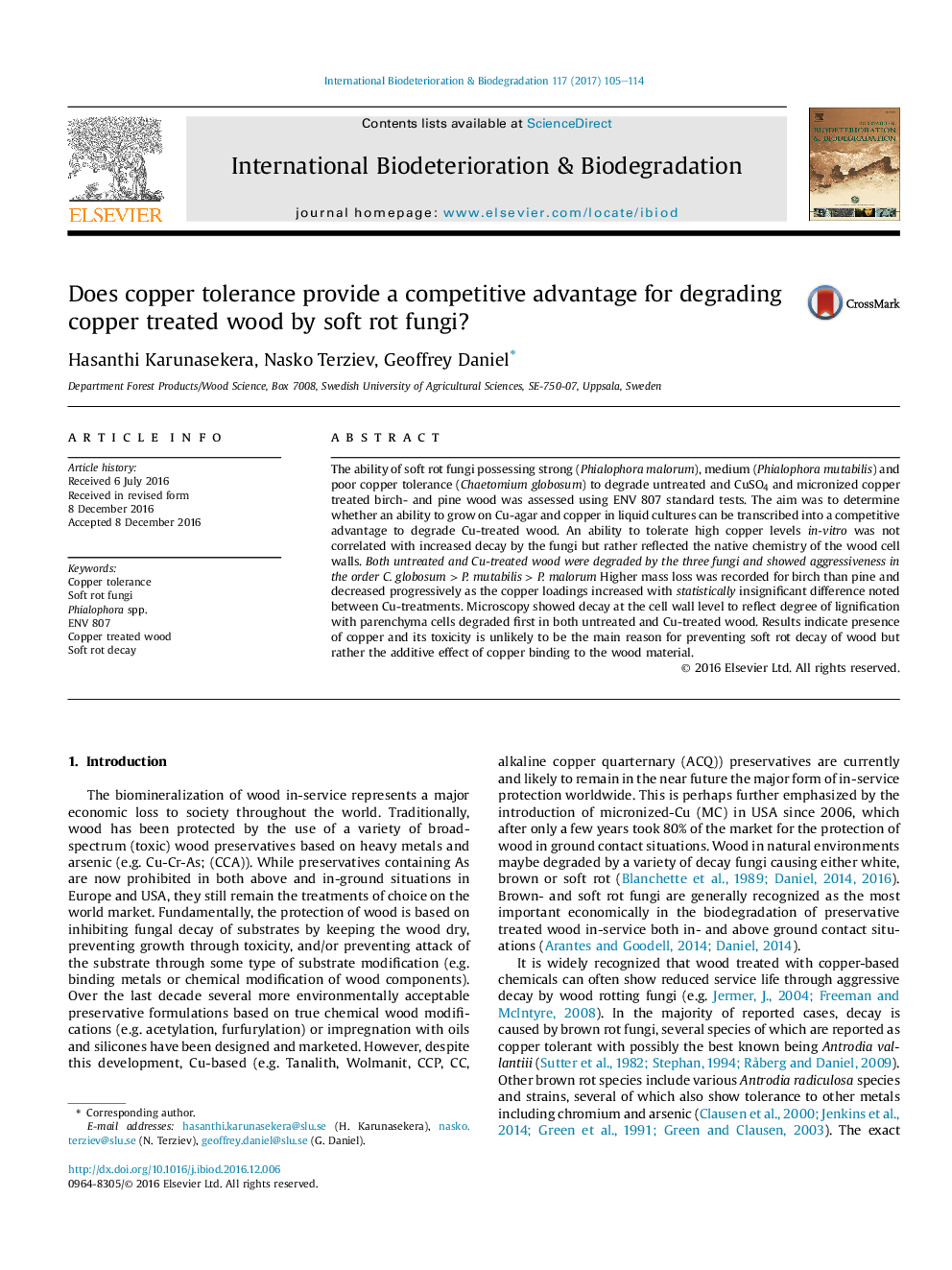| کد مقاله | کد نشریه | سال انتشار | مقاله انگلیسی | نسخه تمام متن |
|---|---|---|---|---|
| 5740527 | 1616300 | 2017 | 10 صفحه PDF | دانلود رایگان |
عنوان انگلیسی مقاله ISI
Does copper tolerance provide a competitive advantage for degrading copper treated wood by soft rot fungi?
ترجمه فارسی عنوان
آیا تحمل مس از مزایای رقابتی برای تخریب چوب مس با قارچ های پوسیدگی نرم برخوردار است؟
دانلود مقاله + سفارش ترجمه
دانلود مقاله ISI انگلیسی
رایگان برای ایرانیان
موضوعات مرتبط
علوم زیستی و بیوفناوری
علوم محیط زیست
علوم زیست محیطی (عمومی)
چکیده انگلیسی
The ability of soft rot fungi possessing strong (Phialophora malorum), medium (Phialophora mutabilis) and poor copper tolerance (Chaetomium globosum) to degrade untreated and CuSO4 and micronized copper treated birch- and pine wood was assessed using ENV 807 standard tests. The aim was to determine whether an ability to grow on Cu-agar and copper in liquid cultures can be transcribed into a competitive advantage to degrade Cu-treated wood. An ability to tolerate high copper levels in-vitro was not correlated with increased decay by the fungi but rather reflected the native chemistry of the wood cell walls. Both untreated and Cu-treated wood were degraded by the three fungi and showed aggressiveness in the order C. globosum > P. mutabilis > P. malorum Higher mass loss was recorded for birch than pine and decreased progressively as the copper loadings increased with statistically insignificant difference noted between Cu-treatments. Microscopy showed decay at the cell wall level to reflect degree of lignification with parenchyma cells degraded first in both untreated and Cu-treated wood. Results indicate presence of copper and its toxicity is unlikely to be the main reason for preventing soft rot decay of wood but rather the additive effect of copper binding to the wood material.
ناشر
Database: Elsevier - ScienceDirect (ساینس دایرکت)
Journal: International Biodeterioration & Biodegradation - Volume 117, February 2017, Pages 105-114
Journal: International Biodeterioration & Biodegradation - Volume 117, February 2017, Pages 105-114
نویسندگان
Hasanthi Karunasekera, Nasko Terziev, Geoffrey Daniel,
